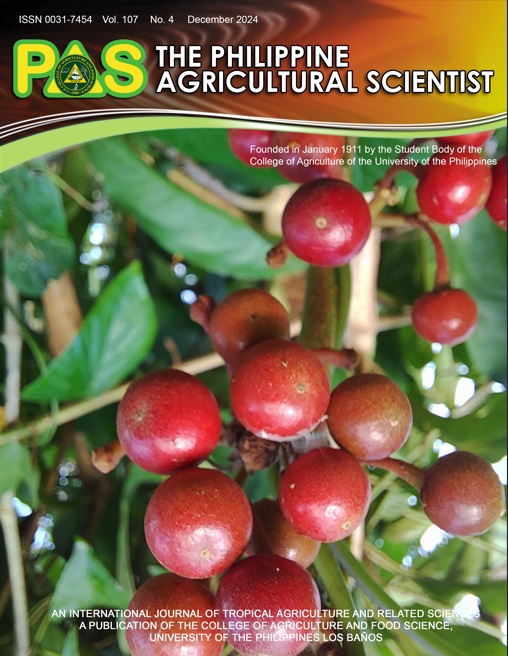Assessment of Drought Tolerance in Mung Bean [Vigna radiata (L.) Wilczek] Through Phenology, Growth, Protein Yield, and Cluster Heatmap Analysis
Abstract
Mung bean [Vigna radiata (L.) Wilczek] cultivation is challenging under the changing climate as less precipitation during the summer season, which is becoming increasingly common, results in soil moisture deficiency and affects production especially at the early growth stages. Hence, this study was conducted to assess the phenology, growth, and protein yield traits of mung bean related to drought tolerance. Eight mung bean genotypes were grown in pots inside a rain-out shelter under well-watered (WW) and water-deficit (WD) conditions. These genotypes included four water stress-tolerant genotypes: G-1 (BARI Mung-8), G-2 (BMX-010015), G-3 (BMX-08010-2), and G-4 (BMX-08009-7), as well as four sensitive genotypes: G-5 (BARI Mung-1), G-6 (BARI Mung-3), G-7 (BU Mung-4), and G-8 (BMX-05001). Soil moisture content was maintained at 22 ± 0.5% (30% deficit of the available water) under WW condition. Water deficit was maintained at WD condition during the entire life cycle and irrigation was applied after symptoms of wilting were observed. Results showed that WD stress significantly influenced the phenology, growth, and protein yield traits in all genotypes. For days to flowering and days to maturity, G-3 took two and four days less in WD than in WW conditions, while G-5 took eight and 19 days less. Because G-3 was revealed as the most drought-tolerant genotype and G-5 as the most vulnerable, G-3 showed the smallest decrease in shoot dry weight and root dry weight under WD stress, whereas G-5 showed the biggest decrease. Likewise, G-3 experienced the smallest reductions in seed yield (35%) and protein yield (32%) under WD condition compared to WW conditions, while G-5 showed the largest reductions (80% and 76%, respectively). The hierarchical clustering analysis using two-dimension heat map also displayed the G-3 genotype as a potential and stable to water deficit stress. These findings show that the studied parameters can be useful in evaluating mung bean tolerance to drought stress and in screening for drought stress-tolerant mung bean genotypes, especially if there are no facilities to determine biophysiological and molecular traits.


